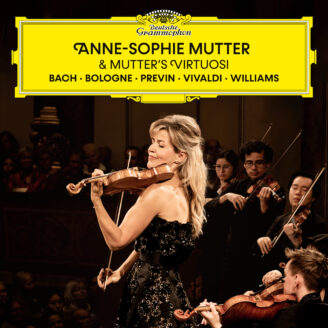Few contemporary composers write music which has such an unmistakable identity as that of Prokofiev. Stylistically, his works changed little over the decades; the same qualities and mannerisms by which his later works are recognized can be found in many of his earlier works. In the summer of 1943, Prokofiev took a much needed respite from his work on the opera War and Peace, a project which was becoming protracted and belabored due to the interferences by Soviet government arts committees and potential producers, and traveled to the town of Perm, in the Ural mountains, where he set to work on a ballet for the Kirov Ballet troupe. By the summers’ end, he had completed the romantic ballet, Cinderella, as well as a Sonata in D major, scored for flute and piano. In reference to his choice of scoring for this sonata, Prokofiev later wrote that the flute "had for a long time attracted me, and it seemed to me that it had been made little use of in musical literature. I wanted this sonata to have a classical, clear, transparent sonority. On one of the highly infrequent occasions that Bernard Shaw returned to his early role of music critic, he described this sonata as a "humorous masterpiece of authentic violin music." Shaw was only partially right - in fact, lyricism and tender feelings are the predominating traits of the work. The work consists of wonderful melodies, at once opening with a long, flowing line that dominates the entire first movement. The Andante is itself one of the most gentle works Prokofiev has written.
Sonata No. 2 in D major for Violin and Piano, Op. 94bis The Sonata received its premiere performance in Moscow on December 7, 1943 with the flutist Kharkovsky and pianist Sviatoslav Richter. Among those present in the audience was the violinist David Oistrakh who later persuaded Prokofiev to arrange the work for violin and piano. Prokofiev's original intentions notwithstanding, Oistrakh's suggestion of a violin arrangement was most propitious and this sonata remains a mainstay of both the violin and flute repertoires. The sonata in it's violin rendition was premiered by Oistrakh in Moscow on June 17, 1944. The opening movement of the Sonata No. 2 in D major, Op. 94 is marked Moderato and is in sonata form. It features the contrast of the long, flowing melody of the first theme, adorned in French lyricism, with the second theme in the character of a square march in dotted rhythm. The fanfare-like opening of the development section, at first sounds like new musical material, but is actually the first theme subjected to a much quicker tempo. The second movement, Scherzo, playfully refuses to obey the confines of its time signature and is followed by a plaintive Trio with imitations of gypsy coloration. The Andante movement, though brief, is a beautifully serene moment. The final movement, Allegro con brio, brings to life the machinations of Prokofiev, the ballet composer. Its themes are undeniably dancelike in character, at times fanciful, while at other times vigorous. The movement evidences moments of Pathos, touches of humor and flights of fancy.
Ileen Zovluck

